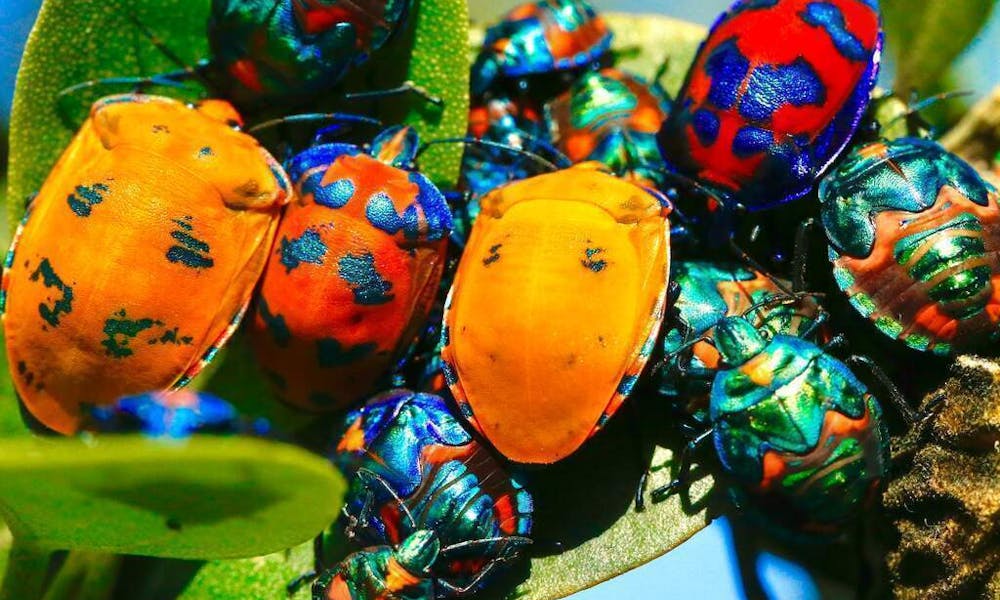Are bugs constantly invading your living space, turning your peaceful abode into a battleground? Instead of relying on chemical-laden sprays and harsh pesticides, why not harness the power of nature to keep those pesky insects at bay? Certain plants possess natural properties that repel bugs effectively while adding a touch of beauty and freshness to your surroundings. In this article, we’ll explore the wonderful world of plants that can help you maintain a bug-free environment without compromising your health or the planet’s well-being.
Introduction
Tired of swatting flies and getting feasted upon by mosquitoes? The solution might be as simple as cultivating the right plants in your garden or indoor spaces. Nature has provided us with a range of bug-repellent plants that not only beautify our surroundings but also help us maintain bug-free zones without resorting to harmful chemicals.
Lavender: The Fragrant Bug Repellent
Lavender, known for its soothing scent, is also a natural bug deterrent. Its lovely fragrance is pleasant for us but repels mosquitoes, flies, and moths effectively. Planting lavender near entry points or outdoor seating areas can create a bug-free haven for relaxation.
Citronella: Nature’s Mosquito Fighter
Citronella is a well-known natural mosquito repellent. This grass-like plant contains citronella oil, a common ingredient in many insect repellent products. Its lemony scent masks the attractants that mosquitoes seek, making it an essential addition to your outdoor spaces.
Mint: A Multi-Purpose Insect Deterrent
Mint isn’t just for adding flavor to your drinks; it’s also a powerful insect deterrent. Its strong aroma overwhelms ants, mosquitoes, and even rodents. Keep pots of mint around entrances to prevent bugs from making their way inside.
Rosemary: Not Just for Cooking
Rosemary’s aromatic presence in your garden can serve as a barrier against pests like mosquitoes and flies. This versatile herb can be cultivated in pots or directly in the ground, enhancing the aesthetic of your garden while keeping bugs at bay.
Marigold: Ward Off Garden Pests
Marigolds are more than just cheerful blooms; they are known to repel aphids, mosquitoes, and even rabbits. Their bright colors add vibrancy to gardens while their natural pest-repellent properties protect other plants.
Chrysanthemums: Natural Insecticide Source
Chrysanthemums contain pyrethrin, a natural insecticide commonly used in bug sprays. These flowers repel ants, ticks, fleas, and other insects effectively. However, they can be toxic to pets, so careful placement is crucial.
Basil: A Herb that Bugs Hate
Basil is a versatile herb that’s loved in many cuisines, but its strong scent repels flies and mosquitoes. Plant basil near doors and windows to prevent bugs from infiltrating your indoor spaces.
Petunias: Keeping Aphids at Bay
Petunias not only add vibrant colors to your garden but also repel aphids, tomato hornworms, and other pests that commonly infest plants. Their low-maintenance nature makes them a favorite among gardeners.
Lemon Eucalyptus: A Powerful Mosquito Repellant
Lemon eucalyptus, with its high citronellal content, is a potent mosquito repellent. Studies have shown that it can be as effective as chemical DEET-based repellents in keeping mosquitoes at a distance.
Chives: Deterring Common Garden Pests
Chives not only enhance the flavor of your dishes but also deter pests like aphids and Japanese beetles. Plant them among vegetables and flowers to provide natural protection.
Alliums: A Flavorful Bug Barrier
Alliums, including onions and garlic, are known for their pungent smell and strong flavors. However, these traits also make them unappealing to many insects. Plant them alongside susceptible plants to ward off pests.
Nasturtiums: Protecting Veggies and More
Nasturtiums not only add beauty to your garden with their vibrant blooms but also act as a shield for vegetables like tomatoes, beans, and cucumbers. They repel insects like whiteflies and squash bugs.
Floss Flowers: Cute Bug-Repelling Blooms
Floss flowers, with their fluffy blossoms, repel bugs like mosquitoes and gnats. Their whimsical appearance adds a touch of charm to your garden while maintaining a bug-free atmosphere.
Conclusion
Creating a bug-free environment doesn’t mean you have to resort to harmful chemicals. By strategically planting bug-repellent plants, you can enjoy a pest-free home and garden while embracing the beauty of nature. These natural solutions not only keep bugs away but also contribute to a healthier and more sustainable lifestyle.
Frequently Asked Questions
- Are bug-repellent plants safe for pets?
- While many bug-repellent plants are safe for pets, some, like chrysanthemums, can be toxic. Research each plant’s safety before planting them in areas accessible to pets.
- Can bug-repellent plants completely eliminate the need for pesticides?
- Bug-repellent plants can significantly reduce the need for pesticides, but in some cases, additional pest management may still be necessary.
- Do bug-repellent plants require special care?
- Most bug-repellent plants are easy to care for and require standard gardening practices. However, proper sunlight, water, and soil conditions are essential.
- Can I plant these bug-repellent plants indoors?
- Yes, many of these plants can be grown indoors as long as they receive adequate sunlight and care.
- How often do I need to replace these plants to maintain their bug-repelling properties?
- Depending on the plant, you may need to replace them annually or when their growth starts to decline.
